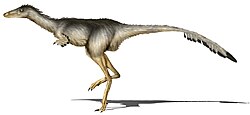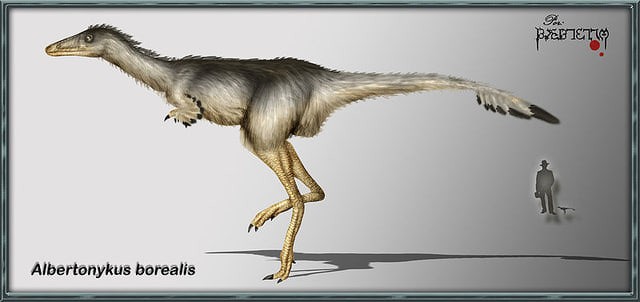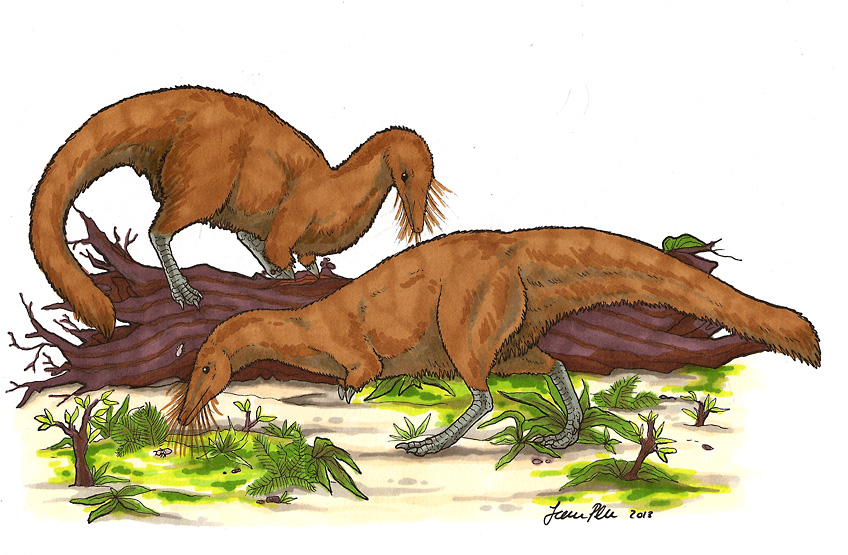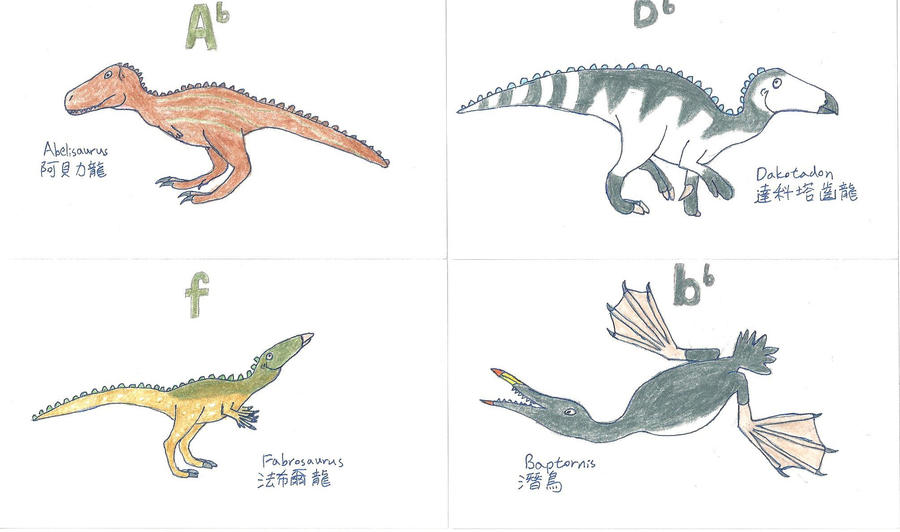Albertonykus
Artistic representation of live Albertonykus borealis
- Canada ( Horseshoe Canyon Formation)
- Albertonykus borealis Long Rich & Currie, 2008
Albertonykus is a genus of very small theropod dinosaur from the Upper Cretaceous ( Maastrichtian early ) of North America.
The to the Alvarezsauridae - a group likely insectivorous dinosaur - Asked genus hitherto known only from the Canadian province of Alberta. The only type ( type species ) Albertonykus borealis described is about 75 inches long by about chicken house size and tail. This makes it the smallest yet discovered dinosaur species in North America.
The name is derived from the locality Albertonykus Alberta and the Greek onyk for " claw" from. The second part of the species name, borealus, is derived from the Greek borealis for "north " from.
Fossil record and systematics
Alvarezsauriden are known in North America only a few fossils. The first and only discovery of Albertonykus comes from the sedimentary rocks of known for its fossil wealth Horseshoe Canyon Formation near the town of Red Deer in the southwest of Canada. It is essentially the front and hind limbs of at least two individuals from the " Albertosaurus bonebed " (one dominated by fossils of more than 20 individuals of Albertosaurus sarcophagus Tyrannosauriers bone stock) in Dry Iceland Buffalo Jump Provincial Park; further discoveries of toe bones come from localities in the vicinity. These fossils have been found during a guided between 2000 and 2003 by Philip J. Currie excavation and kept in the Royal Tyrrell Museum of Palaeontology. Here they were identified in 2006 by Nicholas R. Long Rich.
A phylogenetic analysis of the Fossil material results in a close family relationship ( sister group relationship ) to Asian Mononykinae. This finding is consistent with the hypothesis of an origin of Alvarezsaurier in South America, which spread across North America to Asia.
Paleobiology and ecology
As with other Alvarezsauriden the short but powerful forelimbs of Albertonykus were adapted to a grave function. However, they were too small for the installation of burrows and the Dinosaur used it very likely for digging into insect nests. After analysis of the fossil record of the fine in question states insects both ants and termites -build mounds can be excluded as a possible food resource. Ants, were largely underrepresented in the ecosystems of the Cretaceous period and hill be built termites had not yet developed; they did not appear before the Eocene. Consequently, only wood come colonizing termites for Insektenprädation into consideration. Corresponding trace fossils in silicified wood from the Horseshoe Canyon Formation support this hypothesis: In the woods there are often transition systems, similar to those of extant primitive termite family Termopsidae.
Used literature
- Nicholas R. Rich Long, and Philip J. Currie (2008): " Albertonykus borealis, a new alvarezsaur ( Dinosauria: Theropoda ) from the Early Maastrichtian of Alberta, Canada: implications for the systematics and ecology of the Alvarezsauridae ". In: Cretaceous Research. doi: 10.1016/j.cretres.2008.07.005 (Abstract)










